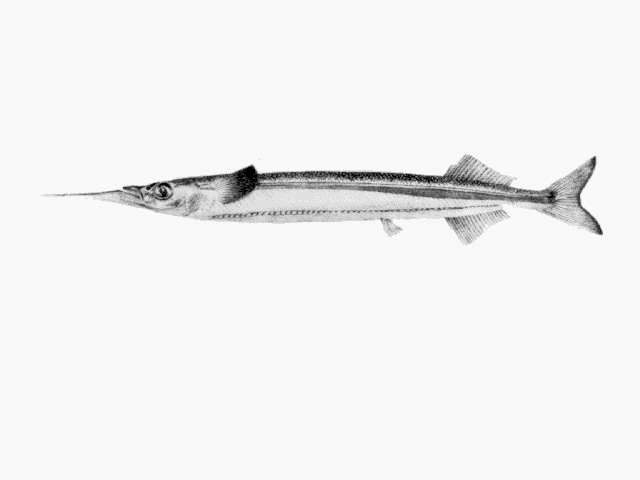| Hemiramphidae (Halfbeaks) |
| 52 cm SL (male/unsexed); max.weight: 600.0 g; max. reported age: 10 years |
|
pelagic-neritic; brackish; marine; depth range 0 - 20 m |
| Eastern Indian Ocean: Endemic to Australian temperate waters (Murchison River, Kalbarri in Western Australia to Eden, New South Wales, including Tasmania). |
|
Dorsal spines (total): 0-0; Dorsal soft rays (total): 15-18; Anal spines: 0-0; Anal soft rays: 17-20; Vertebrae: 55-61. Gill rakers usually 33 or less on the first arch and usually 26 or less on the second arch. Relatively shorter upper and lower jaw, especially at larger sizes. |
| Found inshore in surface waters of estuaries, bays, inlets and gulfs to a depth of about 20 m (Ref. 9563). In the South Australian gulfs, southern sea garfish may be found in deeper waters during the colder months (Ref. 27008). Generally herbivorous, seagrasses and algal filaments comprise about 75% of their food (Refs. 26551, 27013). Form schools, generally found near the surface at night and close to the bottom over seagrass beds during the day (Ref. 6390). Post-larvae or young fish less than 1-year-old live in estuaries from March to July then move to inshore marine waters, remaining there for up to 2 years (Ref. 27012). |
|
Not Evaluated (N.E.) Ref. (130435)
|
| harmless |
Source and more info: www.fishbase.org. For personal, classroom, and other internal use only. Not for publication.

